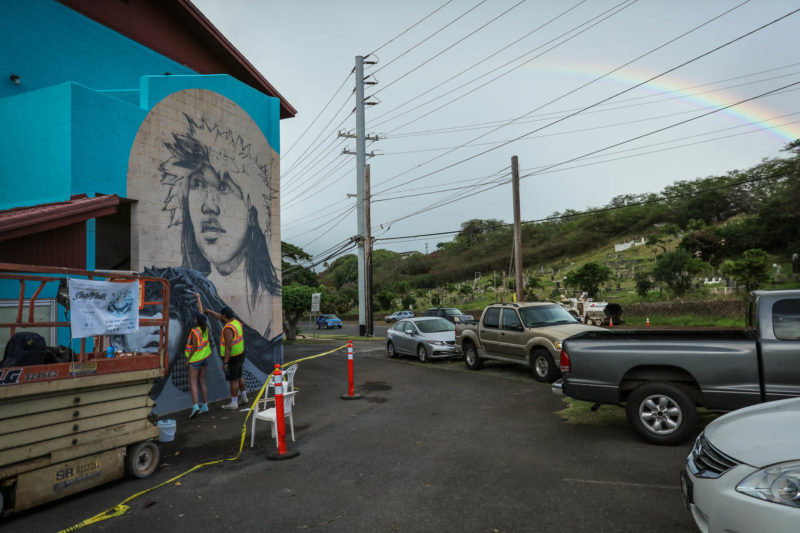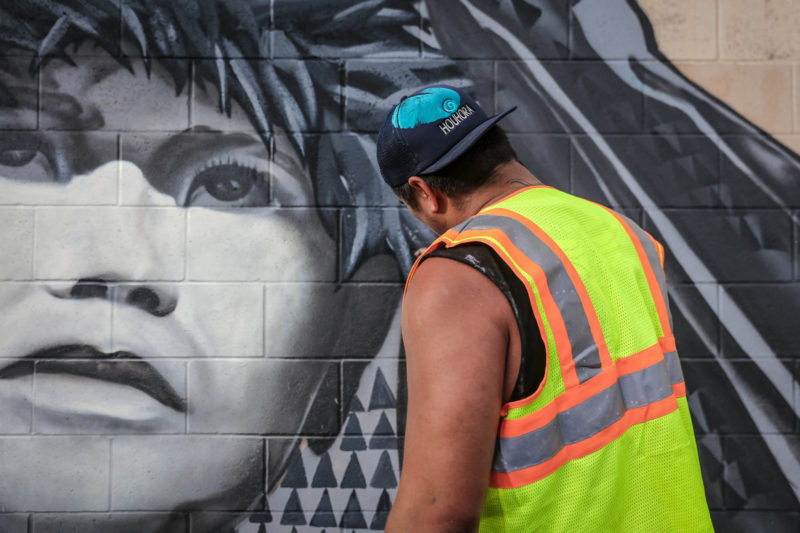Story Behind This Mural
This mural was created in partnership with <a href=”https://www.pacificwhale.org/” target=”_blank”>Pacific Whale Foundation</a>.
False killer whales (Pseudorca crassidens) are a large species of dolphin and one of a group of dolphins known as the “blackfish”. Their name originates from their discovery: they were first described based on fossils and were thought to be extinct. Their skull and teeth resemble that of killer whales, so they were named the false killer whales. In Hawaii, there are three populations of false killer whales: an offshore (pelagic) population, the Northwest Hawaiian Islands population, and the Main Hawaiian Islands insular population. Pacific Whale Foundation’s (PWF) research focuses on the Main Hawaiian Islands insular population which has fewer than 200 individuals, of which very few are females capable of breeding. Due to its extremely small population size and limited range, the insular population was listed as endangered under the U.S. Endangered Species Act in 2012. PWF’s research involves locating false killer whales in the Maui Nui region and collecting identification and photogrammetry photos to determine population parameters and use underwater footage to record behaviors and assess scar patterns. They also use unmanned aerial vehicles (UAVs) to measure body size and condition as well as assess potential pregnancy status.


















